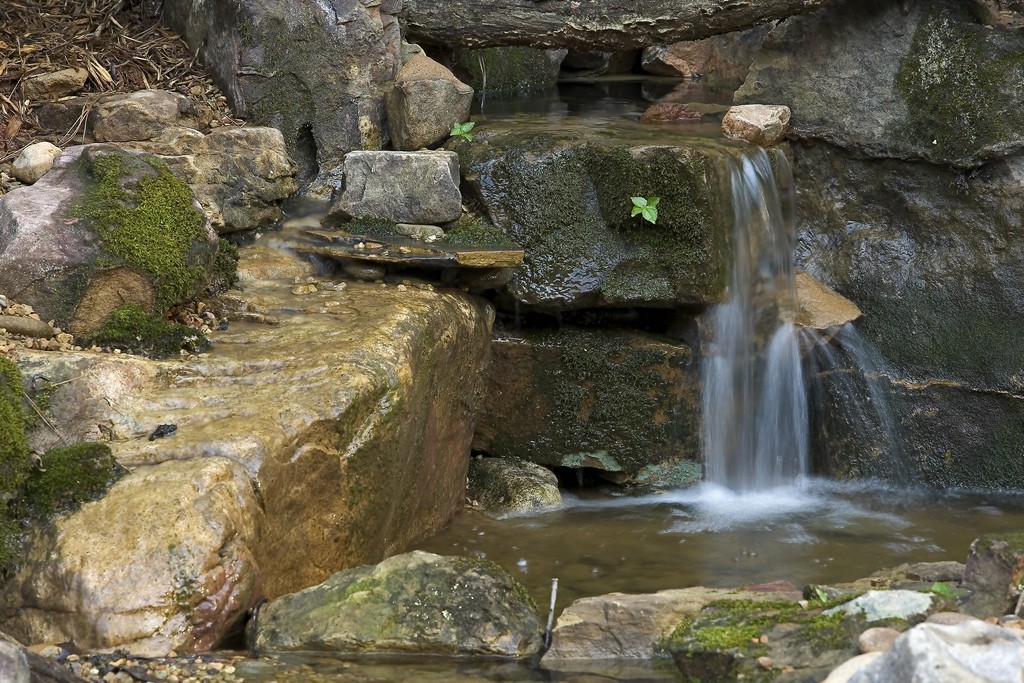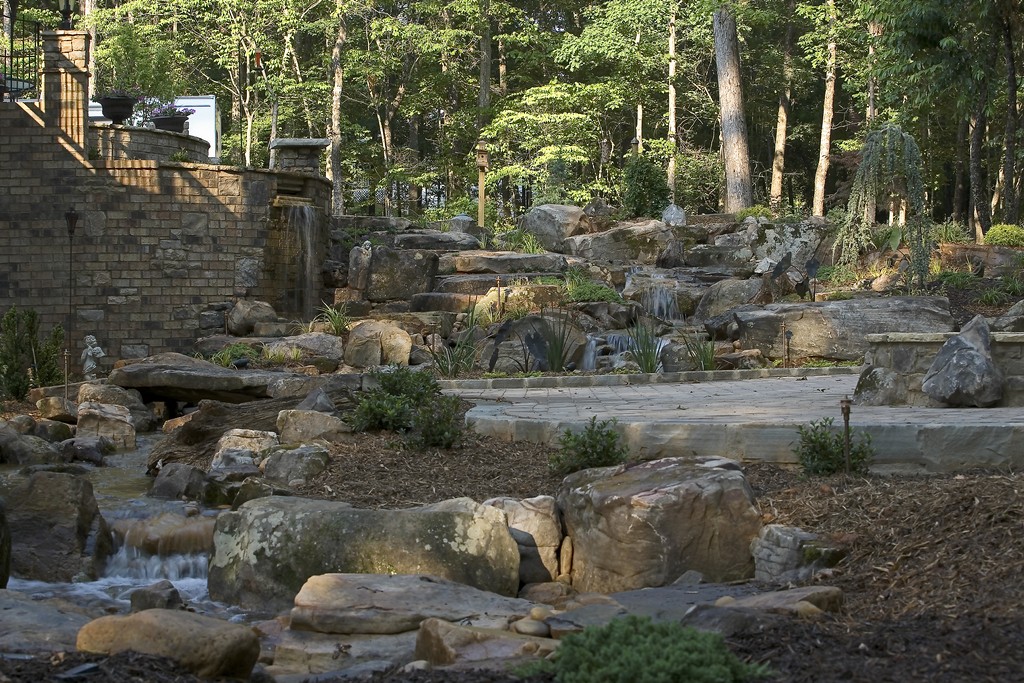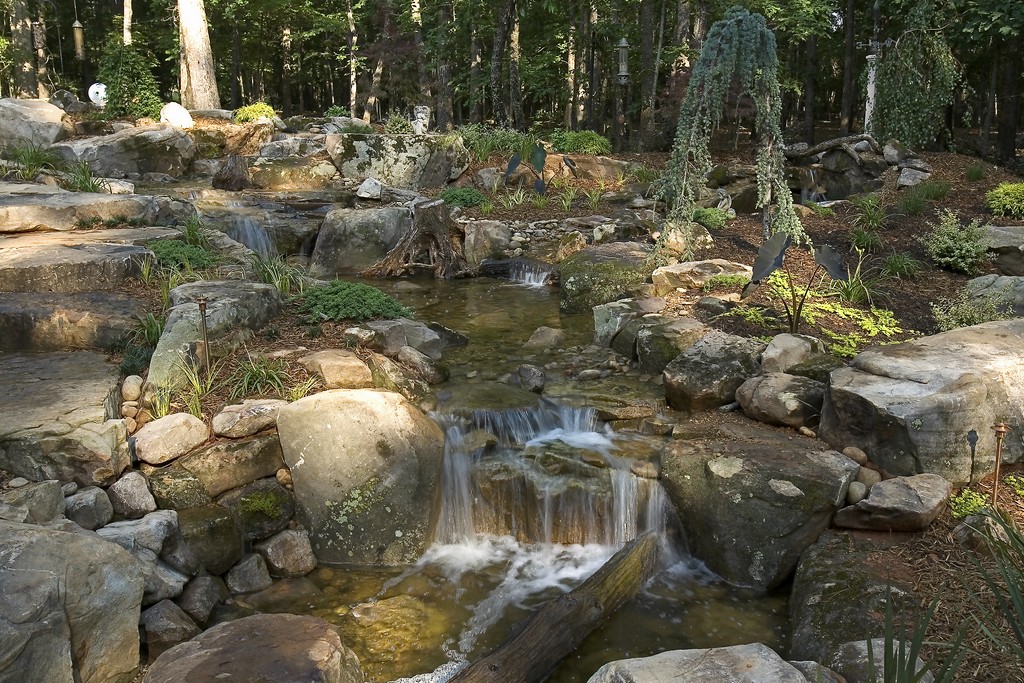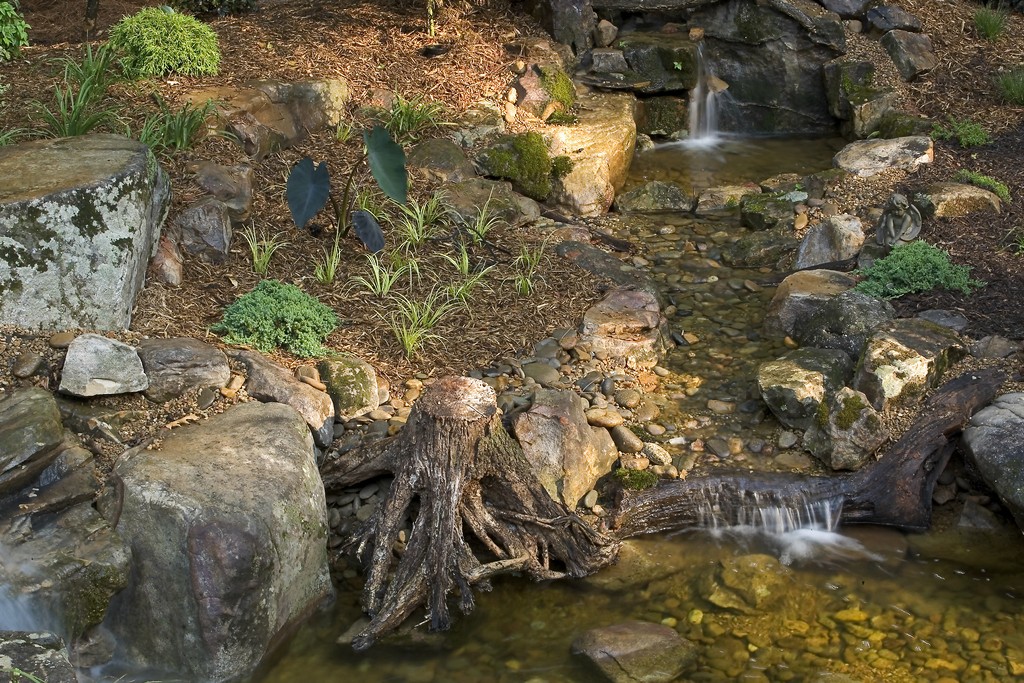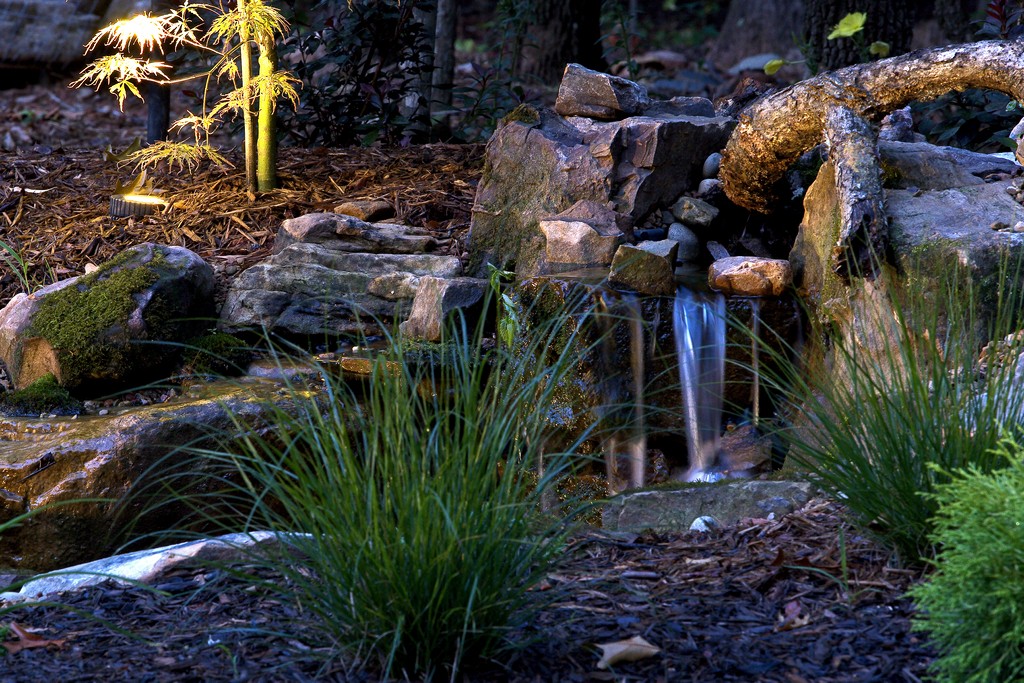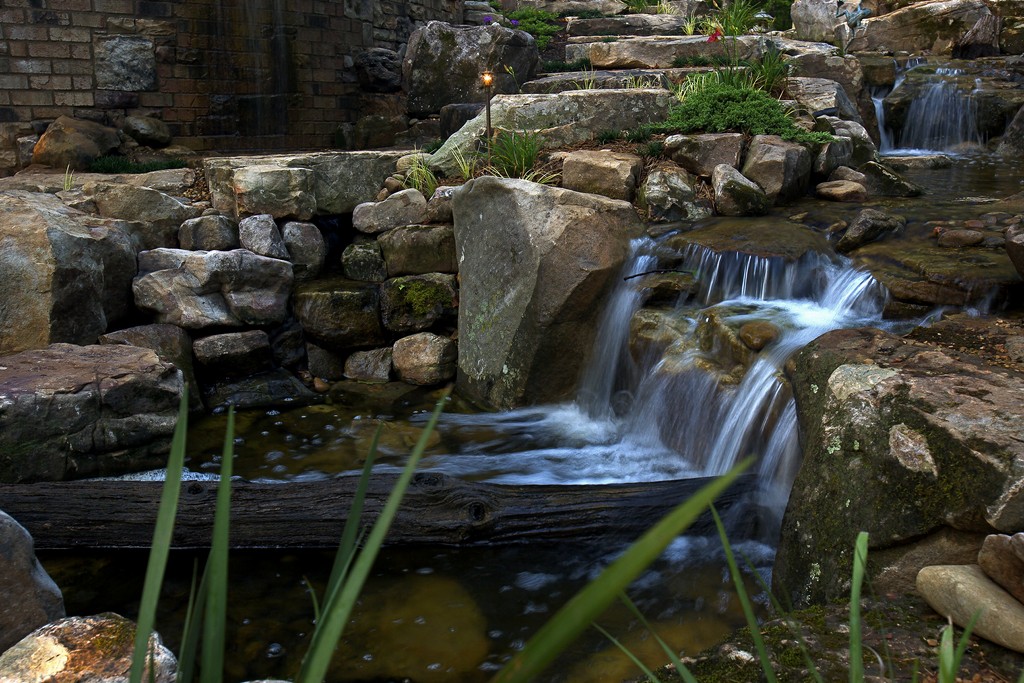Harvesting Rain

Only three percent of the world’s water exists as fresh water – that is, water with low salinity and total dissolved solids of the sort found in lakes, rivers, reservoirs, ponds, streams and aquifers. It is arguably our most precious resource because, quite simply, we can’t get along without it.
As populations grow around the world, the amount of fresh water available for drinking, irrigation, bathing and sanitation annually decreases on a per capita basis. These fresh-water supplies are replenished only by precipitation, so when droughts disrupt historical weather patterns, there’s trouble ahead – especially if the shortages hit highly populated areas.
Today, it is estimated that one in six people on our planet lacks access to an adequate water supply. While the vast majority of those who endure this disadvantage live in other parts of the world, we in the United States are becoming more and more subject to supply shortages when localized droughts occur. Recent conditions in the southeastern United States are a prime illustration of what this entails: In Georgia, for example, water supplies recently hit 50-year lows.
These conditions resulted in the imposition of all sorts of restrictions on water use, in some areas leading to bans on the installation of new watershapes. At Aquascape (St. Charles, Ill.), we’ve long believed that it’s our responsibility as professional watershapers to act responsibly in such circumstances, meaning in our case that we’ve devoted considerable energy to developing systems that help conserve water.
Such measures serve not only the interest of firms that want to keep installing their watershapes, but also meet growing demand among consumers for conservation-conscious features that make optimal use of available water.
That’s why, in 2008, we introduced a rainwater-harvesting system that can be installed in conjunction with various types of ponds, streams and waterfalls. It’s our view that, by capturing rainfall on residential properties, we can contribute substantially to reducing waste in the use of fresh water.
A PERFECT SETTING
Last spring, we installed the system prototype at the Grantville, Ga., home of Tony Sargeant, owner of Aquatic Creations and one of our certified contractors. He had recently finished building his dream home and, being a watershaper, had naturally envisioned a beautiful waterfall system coursing through his wooded backyard.
Through the first several months of the year, unfortunately, there was a statewide ban on all features with running water, the exception being ponds that sustained fish and other life forms. Hearing of the situation, I contacted Sargeant early in 2008 to ask if he’d be willing to let us install our first rainwater-harvesting/storage system in his yard. I cautioned him that the system was still in development, but he jumped at the chance to have us work with him on a signature watershape that would beautify and complete his property while also dealing responsibly with drought conditions.
| Work on site began quickly with the digging of the vault for the water-storage system – a nine-by-12-foot pit five feet deep – in which we installed liners and the fittings needed to draw down the reservoir and move the water where we wanted it to go. Once this was taken care of, we installed 80 AquaBlox units to contain the water and provide support for the rockwork and landscaping with which we intended to conceal the basin. |
A gracious host, Sargeant was also willing to open his home to other contractors who wanted to learn about these systems. Coincidentally (and fortunately), while we negotiating the details the rains finally came back to Georgia: The ban was lifted and we scheduled a training session and installation at Sargeant’s home for April 2008.
An accomplished pond/stream professional, Sargeant had sketched out plans for his waterfeature, taking into consideration where he and his wife would spend most of their time outdoors. His property sits on a hill that slopes diagonally across the backyard, lending itself perfectly to a pondless stream-and-waterfall composition that would face the back of the home. Woods ring the property, providing a perfect backdrop for such a system.
His drawings included four small waterfalls and streams that eventually joined together as one main stream. As with rivers that slice through gorges in the mountains, the streams were to be coarse and fast-moving at the slope’s highest elevation and would gradually slow and widen as they came together near the home’s glass-lined back wall. There was to be a stone bridge across the waterway at a relaxing point where the flow became slow and lazy.
| With the main rainwater-harvesting/storage features in place, we proceeded to work on the waterfalls and streambeds, mostly following the sloping contours of the property but also using the spoils from excavating the storage basin to augment the elevations in key places. Beyond the storage capacity, we also created an overflow system – a 350-gallon infiltration trench that controls the release of excess water into the surrounding soil and aquifer. |
To maintain a connection with the woodland area, the design included natural stones that would lead from the home’s driveway to the patio as well as a stone wall that was to encompass the patio. He also included a small waterfall that would cascade over the patio wall before flowing into the main stream.
Completing the composition was a second walkway across the stream that would lead to a fire pit and seating area – perfect for small bonfires on crisp Georgia evenings during football season. The seating was made up of flat stones, and he’d settled on Tennessee fieldstone and smooth River Jack rock to enhance the natural appearance of the setting.
In reviewing his sketches for this 110-foot-long waterfall/stream system, we immediately recognized that it was an ideal situation for installing the prototype of our rainwater-harvesting system.
COMING TOGETHER
As we saw it, the pondless waterfalls he wanted would aid our cause by adding much-needed aeration. Further, the natural slope would make it easy for us to direct much of the rainwater falling across the entire site to our underground rainwater-storage area. The one difference Sargeant might not have anticipated had to do with excavation of the site, which would be more extensive than he was accustomed to in installing typical waterfall/stream systems.
With a final sketch in hand, we ordered our supplies and organized the training session that was to run alongside the installation process. More than 45 contractors signed up, which encouraged us to think that the system would be well accepted if everything worked as planned. With lots of helping hands in attendance, we blocked out three days for construction from start to finish.
On the first day, there were just five of us on hand, and we worked at excavation from noon until we ran out of daylight. The next day, most of the other contractors arrived, and we started our work at the bottom of the slope and proceeded up the hill. The key at the bottom was the basin for rainwater storage: To shape it, we’d dug to a depth of five feet and formed a vault nine feet wide by 12 feet long.
| Lots of the rainwater falling on the landscape has the opportunity to find its way into the harvesting loop, but the largest direct contribution to the reservoir comes from rain that falls on the home’s roof and flows to its downspouts. To capture that water at the bottom of the system, we set up a pre-filtering unit that allows water to flow directly to the reservoir. Seen to the left of the completed installation is a booster pump that feeds water to a hose bib and allows the homeowners to use some of their stored water for irrigation. |
The red Georgia soil was redistributed to other areas to enhance various upstream contours of the feature – not only efficient but also good environmental-design practice. We then laid out the plumbing that would run from the pumps in the vault and set up biological filters atop the slope that would fill and overflow to initiate the waterfalls and streams.
We were surprised that we’d been able to set most of the stone on the first day, using just the small early crew. Approximately 60 tons of stone were used and had all been sourced from within 500 miles of the property – yet another of the many sustainable-design features of this project.
With most of those who were on hand for training arriving on the second day, that was when we focused on showing them how to install the rainwater-harvesting/storage system. We kicked off the day with a brief, hour-long seminar on stormwater management and its benefits – important information these contractors would need in convincing their clients of the value of the new system.
In addition, we introduced them to an online calculator we’d set up to help contractors determine project requirements – including details on how much water is generated during a typical rain event, 30-year rainfall data for specific regions, keys to sizing of storage basins and much more.
Finally, we turned the focus to the specifics of the project at hand, using Sargeant’s waterfeature to familiarize those in attendance with some of the practicalities involved in system installation.
ANATOMY OF CONSERVATION
Moving into construction mode, we lined the storage basin with a 45-mil EPDM liner and filled the space with 80 of our firm’s AquaBlox Matrix units to create a rainwater-storage capacity of 2,500 gallons.
Made with recycled materials, these modular units have 95-percent void space to maximize water storage. A key advantage is that they are small enough that they can be used to line basins of any size or shape – whatever is required to meet a project’s specifications. They also support weight to a level of 38 pounds per square inch, yet they’re lightweight and install quickly with a bit of on-site assembly.
Large river rock was shoveled in around the units, both to provide stability and to offer some additional filtering surface. We also set up our company’s Snorkel Vault and Centipede Module to improve water quality and aid in sediment removal.
To one side of this core storage area, we added an overflow basin to accommodate the need that might arise in a heavy rainstorm. This was a channel two feet deep, two-and-a-half feet wide and 12 feet long that we lined with geomembrane, six more AquaBlox units for water storage and gravel. The fabric allows water to percolate into the ground and recharge the local aquifer.
| While the rainwater-harvesting/storage system is a key functional detail of this installation, the designer/homeowner had a definite focus on aesthetics and on making his backyard represent his skills and ambitions. But now, where such a system would ordinarily have lost on the order of 600 gallons per month to evaporation, the storage system has let him maintain the feature without substantial additions of municipal water – even through extended periods without any rain. (Photos by Scott Tasker) |
We established two points of entry to guide rainwater from the home’s roof system and into the collection system. The downspout closest to the storage basin flows to a buried filter that removes a variety of pollutants that might otherwise be flushed into the system – leaves, twigs, seeds, bugs and other materials that accumulate on the roof and in the gutters between rain events.
A four-inch pipe runs from this downspout filter to the underground storage chamber. To handle any overflow, a two-inch restrictor pipe leads into the 350-gallon-capacity infiltration trench. (The use of a smaller pipe into the trench is instrumental to slowing the speed of water as it moves into the overflow area.)
The second point of entry from the roof flows through a downspout located near a driveway that passes close by the top of the waterfall/stream system. Stormwater exiting this downspout flows directly into the waterfeature, where it’s filtered and aerated by tumbling along the waterfalls and streams and comes in contact with the biologically active gravel bed and the roots of aquatic plants.
This downspout water then enters the final storage chamber, where it is further filtered before being pumped back up through the biological filters. Three pumps (one of our 8PL Tsurumi pumps and two of our high-efficiency AquaSurge 5000s) manage the task of moving water back to the four waterfalls at the top of the slope.
In addition, we placed a booster pump on a brick pad near the first downspout’s filter and is used to tap into the storage system to water the landscape. This pump increases the water pressure up to 50 psi (the same pressure as garden hoses) for basic irrigation and is available for connection to various high-pressure irrigation systems. In this case, we set up just one of these booster pumps. If needed, we could have set up several around the yard to provide ready access for remote garden-irrigation systems.
FIRED UP
On the third and final day of installation, our crew of approximately 45 finished grading the site and tweaked rock placement for the waterfalls. A victorious cheer spread through the group as the falls were turned on and the water tumbled down all four waterfalls before flowing into the main stream. We spread mulch and took care of landscaping details before breaking at noon to relax and admire our environmental handiwork.
As mentioned at the outset, this was the first of what we’re sure will be the installation of many such rainwater-harvesting/storage systems. While this one works with a decorative waterfeature, we know the applications for freestanding (and not necessarily decorative) systems may be just as numerous because these systems are useful for more than merely replenishing water in decorative watershapes. Indeed, rainwater harvesting can, as mentioned above, be used for irrigation; in addition, it can be advantageous in working with environmental code compliance.
| Day and night, the waterfalls and streams of this elaborate installation have a strong visual appeal, but additional pride comes in knowing that the water – our most precious resource – is being used aesthetically as well as responsibly by virtue of some straightforward extra steps in the installation process. (Photos by Scott Tasker) |
We’re confident that this type of supportive, responsible, ecologically oriented approach to watershaping represents a significant advance in system design and should be considered as watershapers move forward into a future where water conservation is certain to be increasingly important.
The contractors who joined us in Georgia worked tirelessly to complete the project in just three days, and while everyone was motivated to help a fellow pond builder, it’s certain that all who joined in gained valuable hands-on experience in installing this earth-friendly feature.
Several months after the system was installed, I gave Sargeant a call to see how things were going. After 35 days with no rain, he said, the unit still contained approximately 1,600 gallons of stored rainwater and he hadn’t added a drop of municipal water to the system since the installation. (Typically, he said, a water feature of this size would have to be topped off with about 600 gallons per month to keep it functioning properly.)
He also reported having no algae problems, basically because the stored water stayed cool enough that algae didn’t have a chance to grow. (Normally, he would have expected to add regular water treatments to a feature of this size to keep algae at bay.) He also said that the booster pump was supplying most of the water for his landscape needs.
So in addition to being the first on his block to have his own rainwater-conservation system, the proud homeowner now has a breathtaking backyard watershape to complement his new home – and has a showcase he’s using to demonstrate the system’s value to his clients.
Ed Beaulieu is chief sustainability officer at Aquascape of St. Charles, Ill. – a role that has seen him install custom waterfeatures from small ponds to large lakes and commercial waterfeatures. He holds a bachelor’s degree in zoology/limnology as well as a master’s degree in marine biology. Now focusing on sustainability, Beaulieu incorporates water quality, storage and habitat considerations into custom landscape designs that have been featured in such publications as Architectural Digest, Better Homes & Gardens, Nature’s Garden and Irrigation & Green Industry News, among others. He has been project manager for the company’s waterfeature installations at the Flower & Garden Festival at Disney’s Epcot Center in Orlando, Fla., for the past six years and has also appeared on various shows on the HGTV and D.I.Y. channels.










